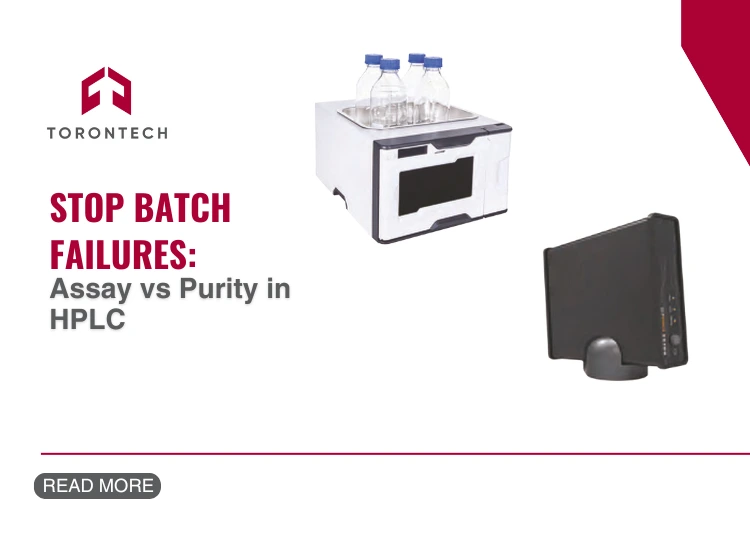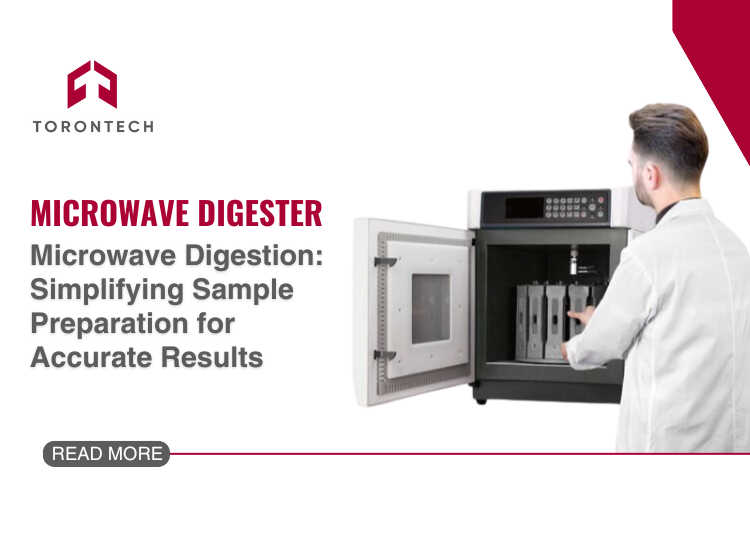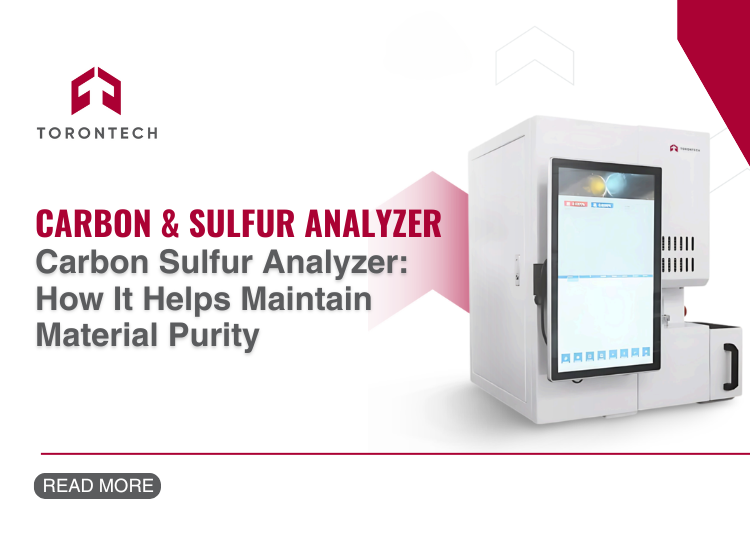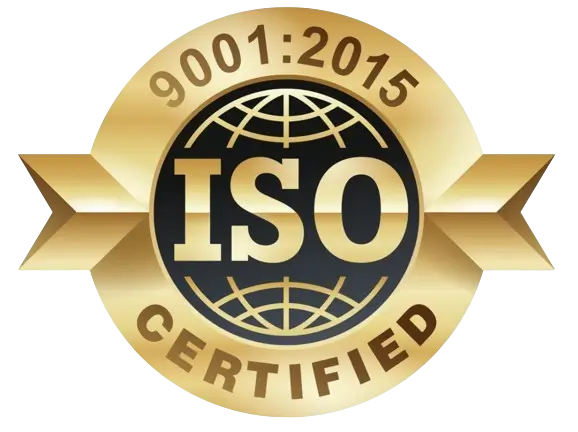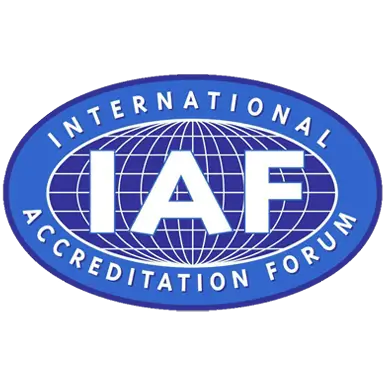In our work supporting manufacturing clients, we’ve pinpointed a recurring challenge that can become a critical failure point: the distinction between HPLC assay and purity.
For any QC manager or production chemist, truly internalizing the difference between assay and purity in HPLC testing is, from our perspective, a non-negotiable for efficient production and meeting compliance standards.
Assay vs. Purity: What’s Actually Being Measured?
It all comes down to a fundamental separation of duties. An assay is focused on the quantity of your target ingredient, while a purity analysis is focused on the quality of the overall sample. This contrast is the core difference between assay and purity in HPLC.
An assay is designed to answer a single, vital question: “How much of our primary component is present in this sample?” This is a quantitative measurement to verify strength or concentration.
A purity analysis, conversely, is set up to answer a different but equally important question: “What else is in this sample besides our primary component?” This process is about identifying and measuring all residual components.
This is the straightforward comparison we use to clarify the difference between purity and assay in HPLC:
| Key Attribute | HPLC Assay (Potency Verification) | HPLC Purity (Contaminant Profile) |
| The Primary Goal | To precisely measure the amount of the main active ingredient. | To identify and measure all other residual components. |
| The Question it Answers | “Does this batch have the correct strength?” | “Does this batch meet the required cleanliness standard?” |
| The Reported Result | A percentage of the target strength, for example, “100.5%”. | A percentage showing how much of the sample is the main component, like “99.8% pure”. |
| Area of Focus | The accuracy and precision of the single, large peak for your main ingredient. | All the other small peaks that indicate the presence of impurities. |
| Business Impact | Confirms the product has the specified efficacy and active strength. | Confirms the product meets safety and stability profiles. |
A Practical Example: The Certificate of Analysis (CoA)
The practical difference between these two figures becomes immediately apparent on a Certificate of Analysis. In our experience, the purity section often reveals the most crucial details about a batch’s overall quality.
You will see a line item for Assay (HPLC) reporting 101.2%. This is an excellent result. But then, in the Purity (HPLC) section, you see 99.7%, followed by a breakdown of impurities. This clearly shows that even with a strong assay, other materials require control.
Why Both Metrics are Essential for Business Operations
In our experience, underestimating the business impact of a purity failure can lead to significant operational risk. A clear understanding of the difference between purity and assay in HPLC shows why both metrics are essential:
- Meeting Compliance Mandates: Regulatory bodies have strict, separate limits for both. A batch can pass its assay specification perfectly and still be rejected if a single impurity is over its allowable limit.
- Protecting Brand Consistency: Testing both parameters ensures your product is not only consistently potent but also has a consistent safety profile, which is key to customer trust.
- Ensuring Supply Chain Integrity: Clients must verify incoming materials. They need to confirm the assay for concentration and the purity to ensure no outside contaminants will compromise their process.
Examples in Practice: A Tale of Two Chromatograms
Consider this common situation: a new lot of a key raw material arrives.
- The Assay Test: The QC team runs the assay method. The final calculation is Assay = 100.2%. The material is potent.
- The Purity Test: Next, the team runs the purity method. The analysis reveals an unknown impurity registering at 0.12%.
The outcome?
This is a batch failure. Per guidelines, an unknown impurity over 0.10% triggers a full investigation.
This outcome is a perfect example of the difference between assay and purity in HPLC in action. The assay confirmed potency, but only the purity test could identify a critical safety and compliance issue.
This is where a sensitive HPLC system pays for itself—by catching a small problem before it becomes a recall. We believe this security should be accessible, not just reserved for labs with the largest budgets.
Trust Torontech for Assay vs. Purity Tests
At Torontech, our goal is to provide laboratories with the instrumentation they need to get clear, definitive answers. We understand the pressure to maintain the highest quality standards while managing budgets. This is why we are committed to supplying cost-effective HPLC solutions that deliver the performance required for these critical tests.
If your lab needs equipment that respects the crucial difference between purity and assay in HPLC, we encourage you to connect with us. Let’s discuss how our range of products can support your commitment to quality.
Ready to Find the Right HPLC Solution?
Frequently Asked Questions (FAQ)
2. Which test is more critical to our operation: assay or purity?
Both are equally critical. However, in our experience, an unexpected purity failure often leads to more extensive investigations and release delays than a minor assay deviation.
3. Will we need separate HPLC methods for assay and purity?
In most cases, yes. A purity method must be developed with enough resolution to separate various impurities. This is why a flexible system that can handle both quick potency checks and long, sensitive impurity runs without a complicated changeover is such a valuable asset for a busy lab's workflow.
4. What does the "area percent" figure signify on a purity report?
This is the standard calculation method. The system software integrates the area of every peak detected. The "area percent" of the main peak represents its proportion of the total integrated area of all peaks combined.
5. Is achieving 100% purity a realistic goal for production?
From a practical standpoint, absolute 100% purity is not a feasible target. The objective is to consistently control and reduce impurities to established, safe levels. Achieving this level of control hinges on having an analytical system you can trust to deliver reliable data, day in and day out.

